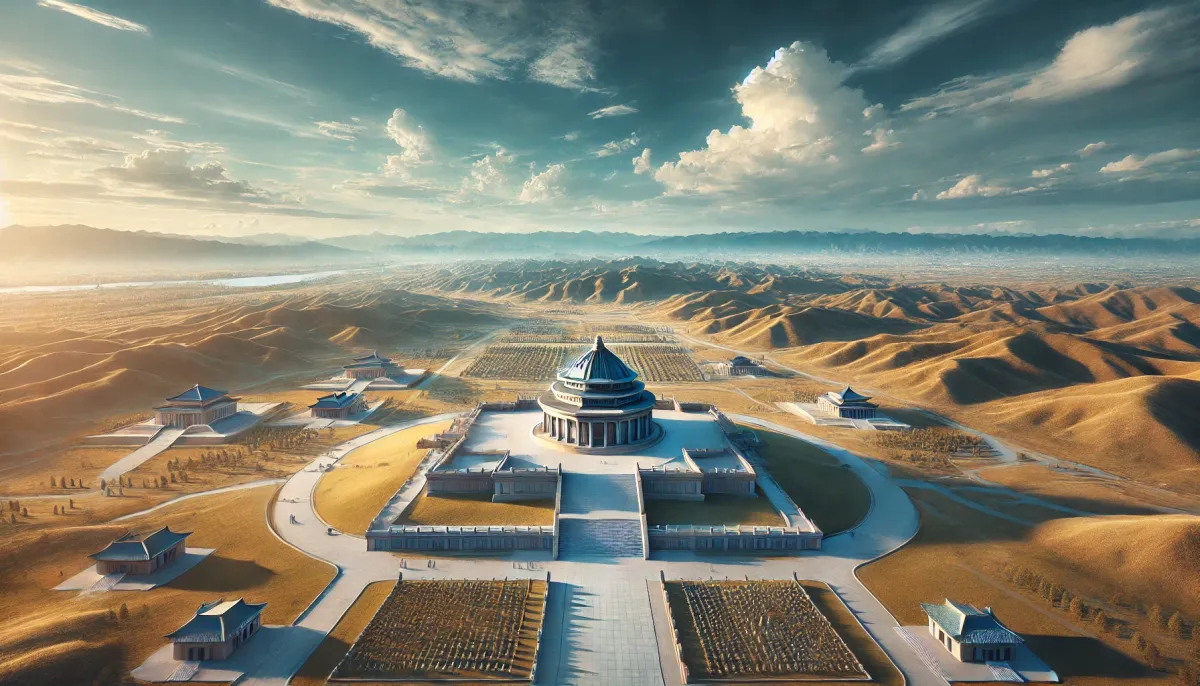Hey everyone, Mark here, your friendly neighborhood American backpacker, always on the hunt for unique travel experiences in Asia. This time, my adventure took me to a place I hadn't even heard of before – Hailar, Inner Mongolia, China. I stumbled upon the World Anti-Fascist War Memorial Park, and let me tell you, it was a truly eye-opening experience. Prepare to be amazed!
Hailar: A Hidden Gem in Inner Mongolia
My journey began with a fascinating conversation with a local guide. He explained that Hailar, the political, economic, and cultural center of Hulunbuir City, is a place of contrasts. During peacetime, the people were farmers; during wartime, they became workers, contributing to the war effort. The architecture along the roadsides reflects the region's unique ethnic diversity.
We passed two statues, Hulun and Bei'er, representing Genghis Khan and his brother. My guide jokingly referred to them as "Hulun the girl" and "Bei'er the lad." The guide's storytelling was captivating – a blend of humor and history delivered in a way that was easily accessible, even for a non-Mandarin speaker like myself.
Here's a quick snapshot of Hailar:
| Feature | Description |
|---|---|
| Location | Northeastern Inner Mongolia Autonomous Region, China |
| Altitude | 600-700 meters |
| Average Temp | -2 degrees Celsius |
| Meaning (Mongolian) | "Wild leek land" – due to the abundance of leeks along the Hailar River |
| Nickname | Pearl of the Grassland |
| Transportation | Well-connected by rail, road, and air; Beijing-Moscow railway passes through |
| Ethnic Groups | Home to over 26 ethnic groups, including Han, Manchu, Mongol, Hui, Korean, etc. |
The World Anti-Fascist War Memorial Park: A Powerful Testimony
The highlight of my trip was undoubtedly the World Anti-Fascist War Memorial Park. Located in northern Hailar, this 110-hectare park stands on the site of the former Japanese Kwantung Army's Hailar Fortress. It's unique in that it's the only site in China where multiple nations collaborated to create a monument reflecting patriotism, internationalism, and revolutionary heroism. The park powerfully showcases the combined might of China, Russia, and Mongolia in resisting fascism.
The North Mountain Position: A Window into History
The park features the North Mountain Position, one of the five main and four auxiliary battle positions built by the Japanese between 1934 and 1937. This position is particularly significant; it boasts the most complex and extensive above and below-ground fortifications of its kind in China. It serves as a testament to the brutality of the Japanese occupation and the resilience of the Chinese people who were forced to build these structures. The sheer scale of the underground tunnels and fortifications, evident from the photographs I took, is truly astonishing. It made me reflect on the suffering endured by the countless Chinese laborers who toiled under harsh conditions during this dark period of history. I'm reminded of the similar plight of Chinese laborers who built the Transcontinental Railroad in the United States and contributed to numerous other infrastructure projects worldwide.
Fascism vs. Nazism: Understanding the Nuances
The Memorial Park didn't shy away from the complexities of history. My guide helped me understand the distinction between fascism and Nazism. While often conflated, they are different ideologies. Fascism is a form of ultranationalist political movement characterized by authoritarianism and militarism, whereas Nazism, a specific form of fascism, emphasizes racial superiority and a hierarchical social structure. The park’s dedicated presentation of these historical realities resonated deeply with me. China's decision to preserve this history, regardless of its complexities, is noteworthy. Many countries often tend to downplay or sanitize their past, but China displays a stark contrast, leaving these historical events intact for future generations to learn from.
A Must-Visit for Every Traveler
My experience in Hailar and at the World Anti-Fascist War Memorial Park exceeded all expectations. It wasn't just a historical site; it was a powerful reminder of the importance of remembering the past to build a better future. I wholeheartedly recommend this destination to fellow travelers, particularly those from English-speaking countries, seeking a unique and insightful travel experience that goes beyond the typical tourist spots. This place offers a profound lesson in history and the importance of international cooperation.







